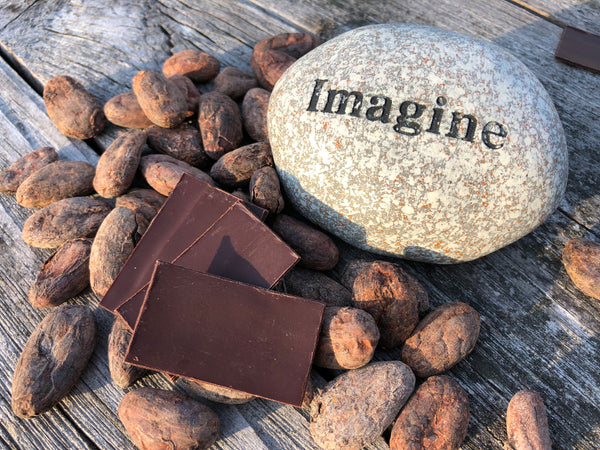SAVING CACAO TREES THAT MAKE GREAT CHOCOLATE: THE HEIRLOOM CACAO PRESERVATION FUND
Aug 20, 2020
If the Heirloom Cacao Preservation Fund sold T-shirts, one might read, “Get your hands off my fine-flavored cacao!” In other words, the HCPF is the good guys.
The Heirloom Cacao Preservation Fund, started in 2012 through a partnership with the USDA and the FCIA (Fine Chocolate Industry Association), is an organization dedicated to preserving endangered cacao trees, specifically one that produce unique and flavorful cacao beans that make fine-flavored chocolate. The HCPF is a US-based nonprofit with a board of directors composed of chocolate makers, industry advocates and educators. Anne Zaczek of the HCPF tells us more.
Threats to Fine-Flavored Cacao
Currently, we know that cacao trees are threatened by environmental change, deforestation, and economic influences; but high yielding genetically-modified varieties such as CCN-51 threaten the loss of diverse flavorful cacao varieties. Zaczek explains, “An example of this is in Ecuador. Because of the devastating introduction of witches broom in 1960, cacao farmers switched to a higher disease resistant cacao variety CCN-51.” Zaczek continues, “The problem with CCN-51 is that while it is high-yielding, there is a threat to the environment, as it is grown in full sun, whereas the traditional cacao varieties such as heirloom-designated cacao are grown in an environment that promotes biodiversity, and chocolate made with CCN-51 beans is flavorless.”
How Cacao Is Chosen As “Designated Heirloom”
On how the designation process at the HCPF works, Zaczek tells us, “Any producer who believes that they are producing cacao with a unique and complex flavor profile can apply to the HCPF and our tasting panel will assess whether or not it is worthy of heirloom designation.” There is a fee for farmers to submit their cacao and apply for an heirloom designation, but through sponsors it is possible to waive this fee.
Heirloom cacao designation is based on exquisite flavor rather than a specific genetic cacao or flavor profile. “To achieve heirloom designation, an internationally acclaimed tasting panel performs a blind flavor analysis, and is looking for beans with a unique and complex flavor profile that have clarity and balance.” By designating certain varieties as “heirloom,” the HCPF supports sustainable and ethical cacao farming practices, ensuring the survival of high quality and rare cacao.
Cacao, Cashews, and Bananas
These heirloom varieties are not intended for mass production, so these plants are often grown by small farmers in areas of high biodiversity. By growing heirloom varietals alongside other taller fruit bearing trees, such as cashews, bananas and papayas; this provides numerous ecological, economic and social benefits.
Two Special Farmer Groups
Currently, there are 16 Heirloom Designees around the world. We looked at the la Asociación de Productores Agropecuarios Artesanal Nueva Esperanza (ASOANE) in Puerto Quito, Ecuador and at the Tujikomboe Farmers Group in Tanzania to see what makes their cacao so special, and how they are achieving the goal of preserving unique cacao varieties.
The ASOANE is an association of 25 producers of artisanal agriculture in Puerto Quito, Ecuador. Cacao farming began in this region over 75 years ago when Nacional cacao was brought in from the neighboring Los Rios Province. This variety of cacao is known for its complex flavor, as well as its ability to grow alongside other plants and trees that provide habitats for midge pollinators (the primary pollinator of cacao trees) and other animals.
In Tanzania, heirloom cacao is grown by the Tujikomboe Farmer Business Group. This group largely supports women farmers in the Kyela District of Southwest Tanzania. Cacao farming allows these women and other traditionally excluded groups to prosper in the local marketplace and support themselves. The Tujikomboe Group also works with TechnoServe, a non-profit that proposes business solutions to poverty, in order to develop local leaders and promote gender equality among the workforce. Read more about the Tujikomboe Group and their partnership with TechnoServe here: https://www.technoserve.org/blog/national-chocolate-day-changing-womens-lives-through-cocoa/
To find more about the Heirloom Cacao Preservation Fund and the work they do, check out their website at https://hcpcacao.org/.


